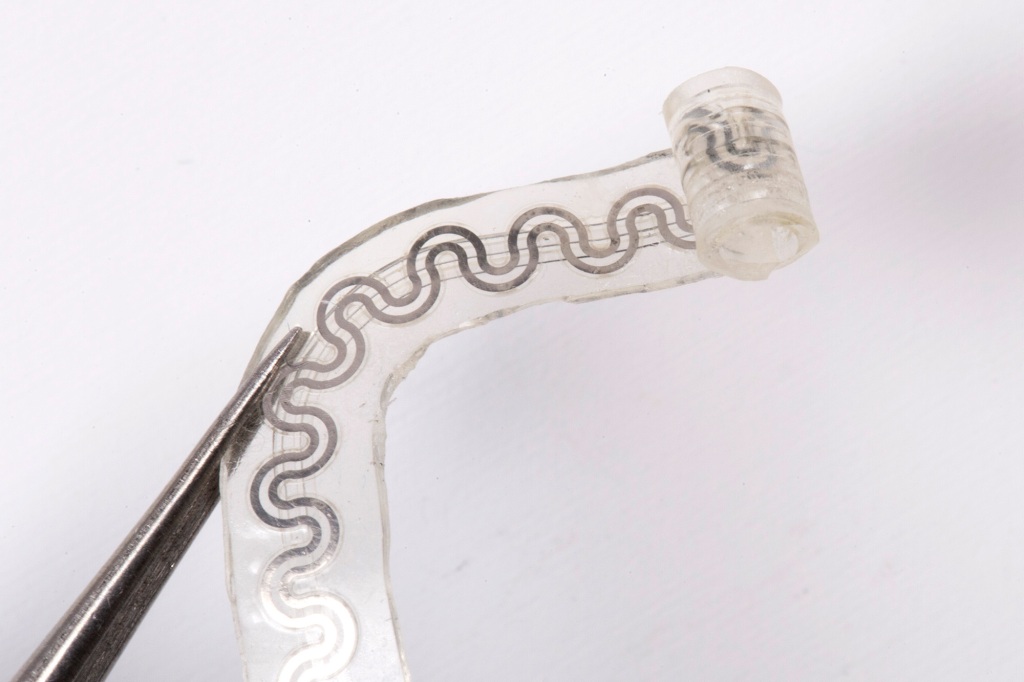Scientists develop implant that reduces pain without drugs
A team of researchers led by Northwestern University has developed a dissolvable implant that rapidly relieves pain without the use of drugs, according to a study published in Science.
The biocompatible implant is controlled by an external pump that allows the patient to activate it at the onset of pain and control its intensity. The implant would not require surgery to remove since it is water-soluble and will simply dissolve.
“The technology reported here exploits mechanisms that have some similarities to those that cause your fingers to feel numb when cold. Our implant allows that effect to be produced in a programmable way, directly and locally to targeted nerves, even those deep within surrounding soft tissues,” Rogers said.
The implant is 5 millimeters long at its widest point. It works by softly wrapping around a single nerve, while another end is attached to the control pump outside of the skin. The implant evaporates a liquid coolant in the targeted area, which numbs the nerve and blocks pain signals to the brain.
Evaporation is achieved via tiny microfluidic channels contained in the implant, one channel contains the coolant perfluoropentane — a clinically approved ultrasound contrast agent which is also used for pressurized inhalers, and another channel contains dry nitrogen, an inert gas. When the coolant and gas flow into the same chamber evaporation instantly occurs, and an integrated sensor monitors the nerve to make sure its temperature does not drop to a level that could cause tissue damage.
“Excessive cooling can damage the nerve and the fragile tissues around it,” Rogers said. “The duration and temperature of the cooling must therefore be controlled precisely. “By monitoring the temperature at the nerve, the flow rates can be adjusted automatically to set a point that blocks pain in a reversible, safe manner.”
“As you cool down a nerve, the signals that travel through the nerve become slower and slower – eventually stopping completely,” said study co-author Dr. Matthew MacEwan of Washington University School of Medicine in St Louis.

“We are specifically targeting peripheral nerves, which connect your brain and your spinal cord to the rest of your body. These are the nerves that communicate sensory stimuli, including pain.” Dr. MacEwan said, “by delivering a cooling effect to just one or two targeted nerves, we can effectively modulate pain signals in one specific region of the body.”
The researchers believe their device will be a safe alternative to opioids and other highly addictive medications. They foresee its greatest benefits going towards people who undergo routine surgeries and amputees who require post-surgery medications to manage pain.
“Although opioids are extremely effective, they also are extremely addictive,” Northwestern’s John A. Rogers, who led the device’s development told Reuters. “As engineers, we are motivated by the idea of treating pain without drugs.”
Rogers tells Smithsonian that further studies are necessary before the implant can be tested on humans, it was previously tested on rats. He says more must be learned about the human body to make the device more compatible and prevent possible side effects like overcooling.
”After you stop the cooling, how long does it take the nerve to kind of recover so you can restart the cooling?” he says. “Those are the kinds of studies that I think are the most important ones to conduct before using a device with humans.”
With Post Wires
Read the full article Here


